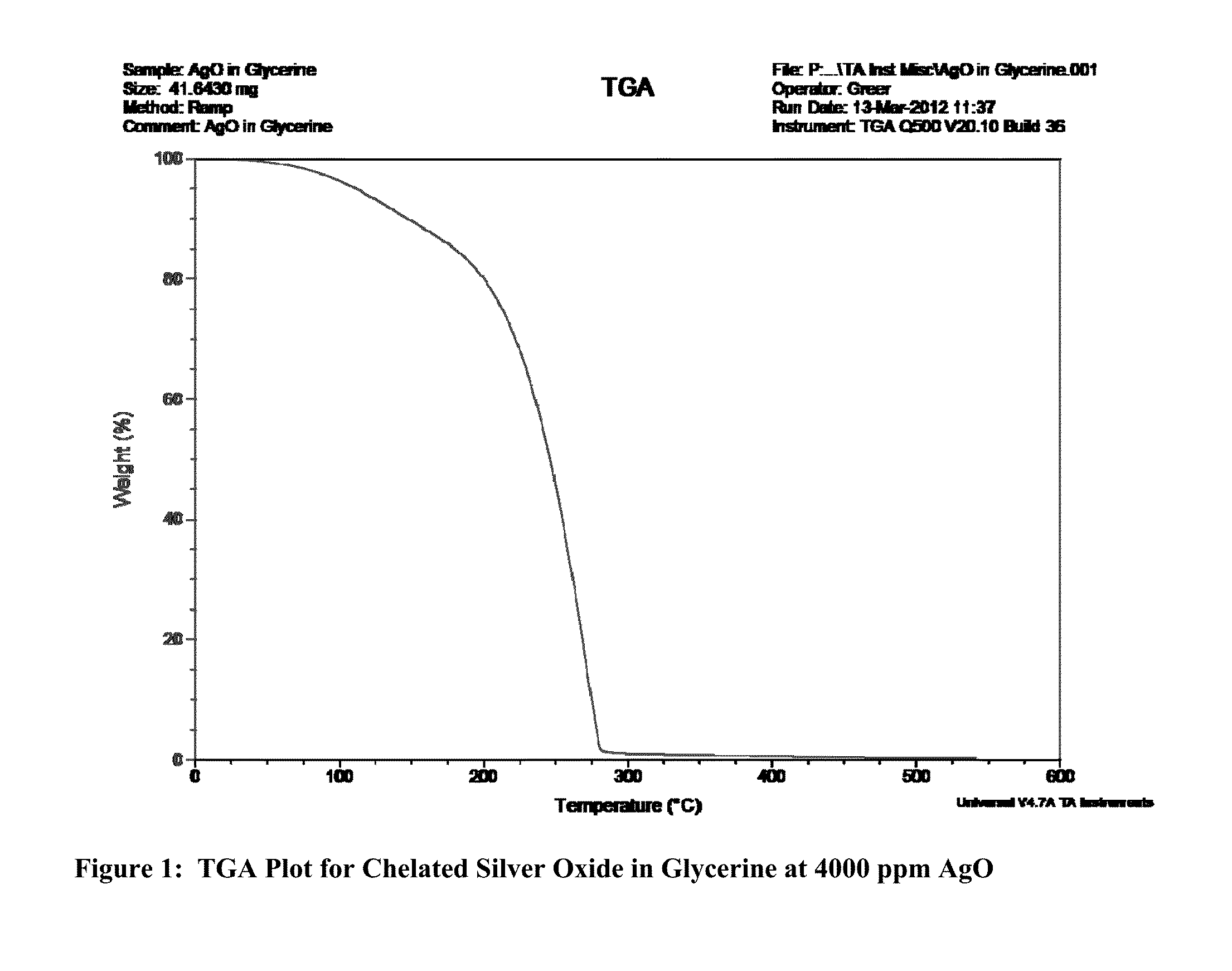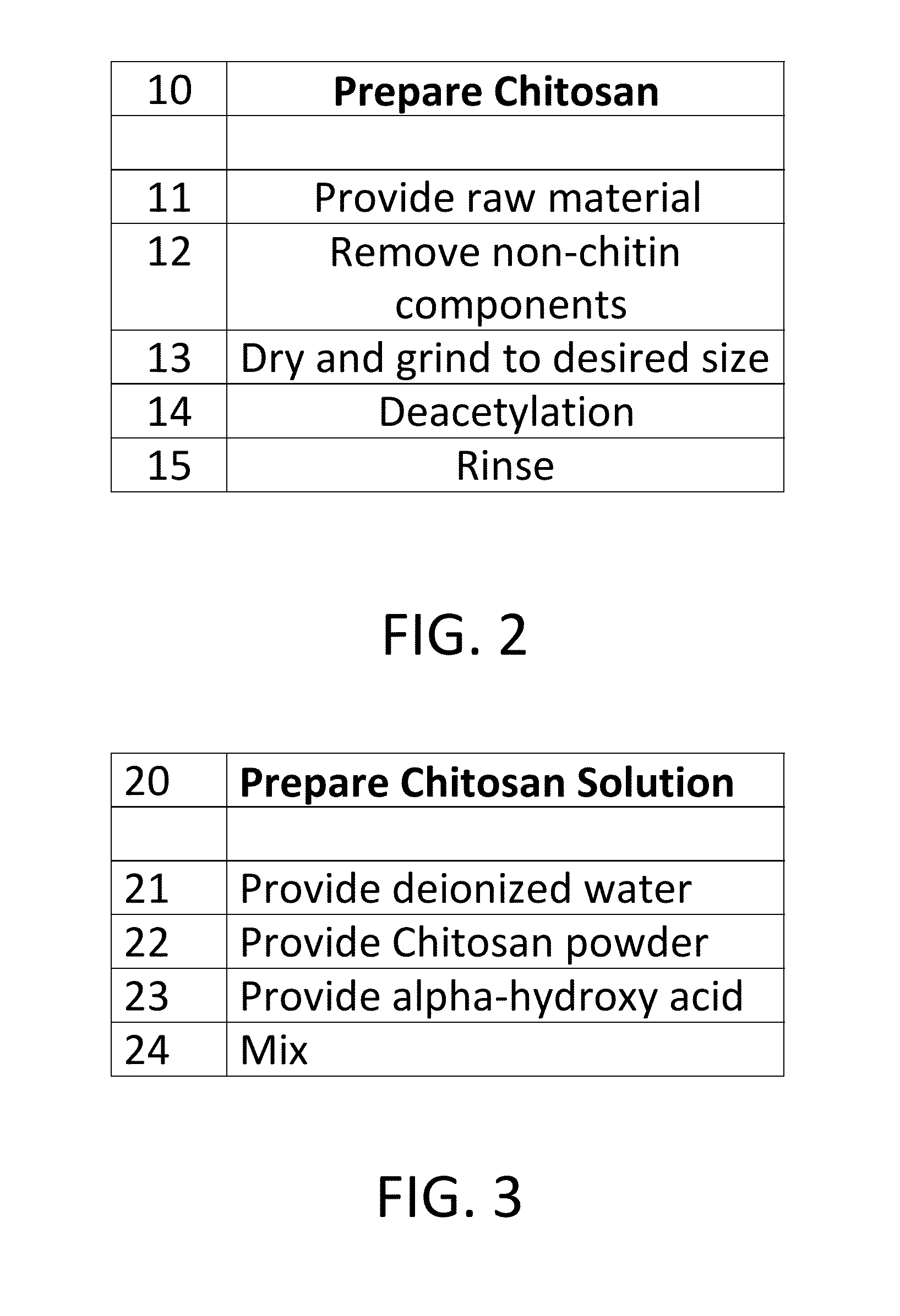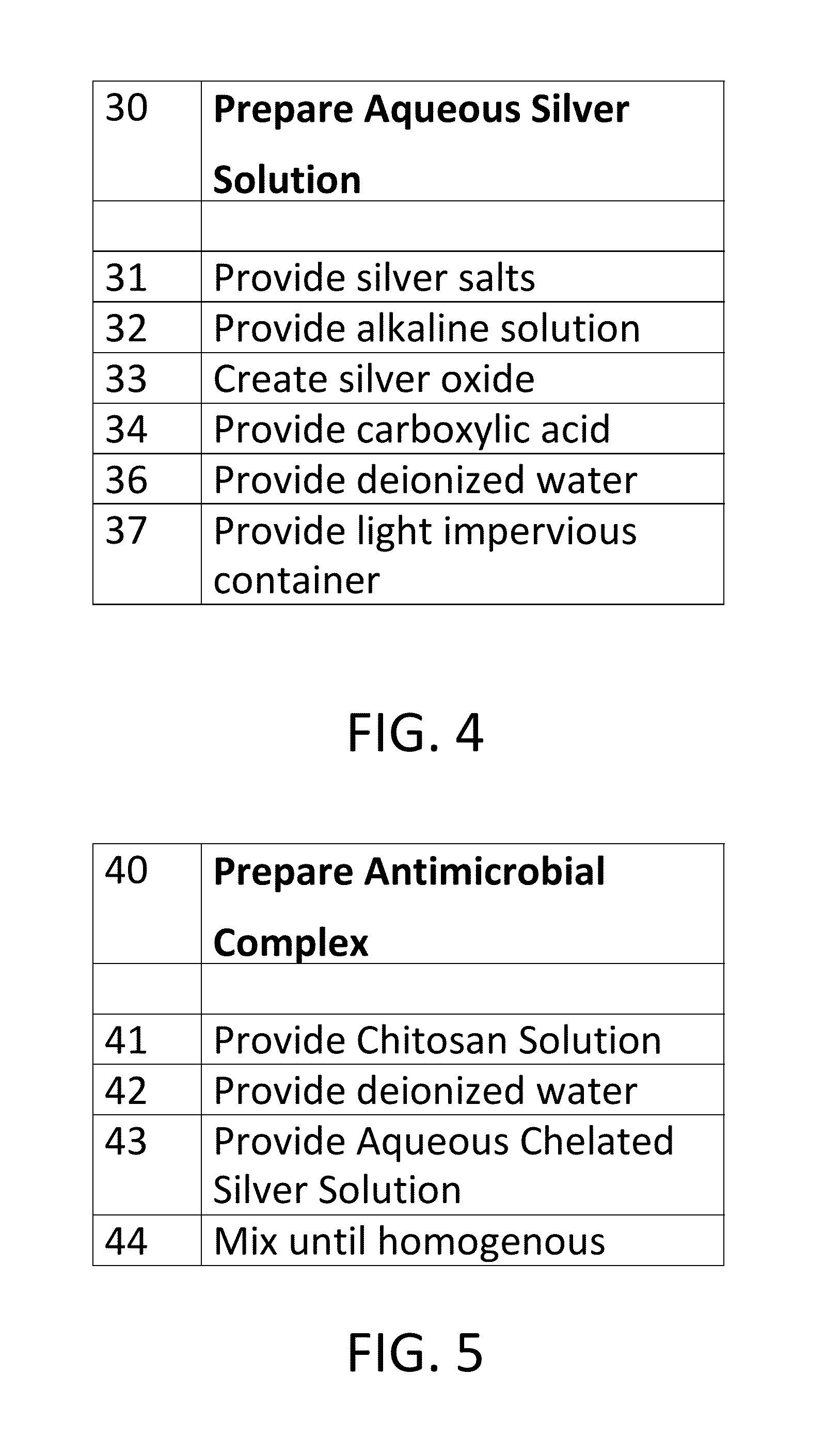Metal Oxide Compounds and Infusion Into Polymer Compounds
a technology of metal oxide compounds and polymer compounds, which is applied in the direction of biocides, hair cosmetics, biocide, etc., can solve the problems of high cost of final articles, inability to meet the requirements of use, so as to reduce the cost of final articles.
- Summary
- Abstract
- Description
- Claims
- Application Information
AI Technical Summary
Benefits of technology
Problems solved by technology
Method used
Image
Examples
example 1
[0122]The process of forming the chelated silver oxide is best described in Working Example 1 as follows;
[0123]On a 500 gram basis to make a 4000 ppm concentration of a chelated silver oxide suspended in a glycerine base, all materials are weighed out in advance of mixing;[0124]1. Take 0.47 wt. % (2.35) grams silver oxide powder (nominal size is 10 nm) and blend at high speed (at least 1000 rpm) into 31.54 wt. % (157.7) grams distilled water at 180 degrees Fahrenheit (82 Centigrade) for up to 3 minutes. The pH of this slurry should rise to 8.21. More than 3 minutes will cause too much oxidation. Put this dark slurry solution aside.[0125]2. Take 5.65 wt. % (28.25 grams) of citric acid and introduce this into 5.65% (28.25) grams of distilled water at 82 degrees Centigrade and mix for 3-4 minutes. The pH of this solution should level out at 1.83. Put this solution aside as well.[0126]3. Take the slurry of (1) above and add to the solution of (2) above and keep the mixture at 82 degrees...
working example 2
[0181]A 500 ml amount of polyol based complex suspension together with 100 ppm of a silver oxide complex was prepared in the following manner:
[0182]Solution A
[0183]0.265 gms. Citric Acid and add to
[0184]299.735 gms. Distilled Water with 2% chitosan solution Mix 5-10 minutes
[0185]Slurry 1
[0186]0.11 gms. Silver Oxide and add to
[0187]99.89 gms. Distilled Water
[0188]Disperse 5-10 minutes
[0189]Take prepared Solution A and place under moderate agitation for the stipulated time. Slowly add the previously dispersed silver oxide in water Slurry 1 and mix at high speed for 30-45 minutes. The resulting silver oxide is a chelate and is colorless and odorless. Remove from agitation, filter through a qualitative analysis filter paper, such as VWR 20 415, and set aside in a light impervious container. The silver oxide complex is now ready to be used to make a glycerine composition useful for various purposes. Take 30 mls of the 2% chitosan solution and to it add 70 mls distilled water. Mix for 1 m...
PUM
| Property | Measurement | Unit |
|---|---|---|
| weight percent | aaaaa | aaaaa |
| particle diameter | aaaaa | aaaaa |
| temperature | aaaaa | aaaaa |
Abstract
Description
Claims
Application Information
 Login to View More
Login to View More - R&D
- Intellectual Property
- Life Sciences
- Materials
- Tech Scout
- Unparalleled Data Quality
- Higher Quality Content
- 60% Fewer Hallucinations
Browse by: Latest US Patents, China's latest patents, Technical Efficacy Thesaurus, Application Domain, Technology Topic, Popular Technical Reports.
© 2025 PatSnap. All rights reserved.Legal|Privacy policy|Modern Slavery Act Transparency Statement|Sitemap|About US| Contact US: help@patsnap.com



